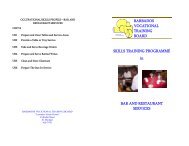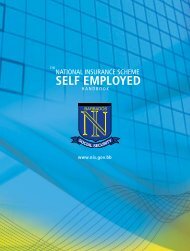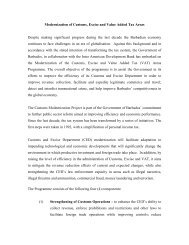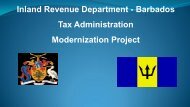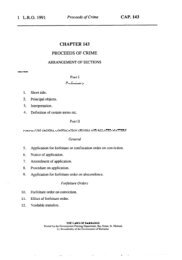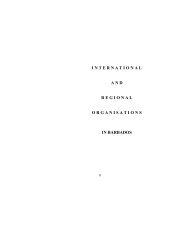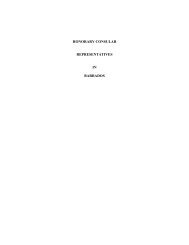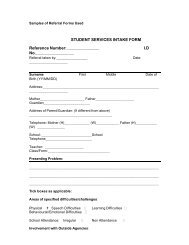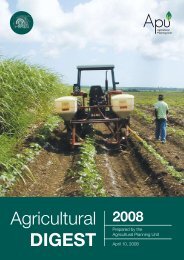Revised Central Bank-AMLA Guidelines - Anti-Money Laundering ...
Revised Central Bank-AMLA Guidelines - Anti-Money Laundering ...
Revised Central Bank-AMLA Guidelines - Anti-Money Laundering ...
You also want an ePaper? Increase the reach of your titles
YUMPU automatically turns print PDFs into web optimized ePapers that Google loves.
AML/CFT GUIDELINEISSUED BY THECENTRAL BANK OF BARBADOSIN CONJUNCTION WITH THE ANTI-MONEY LAUNDERING AUTHORITYMAY 20112.0 APPLICATIONThis guideline 1 applies to all entities that are incorporated in Barbados and that are licensed underthe FIA and IFSA. Licensees should ensure that, at a minimum, this guideline is also implementedin their branches and subsidiaries abroad, and where permitted in the host country, ensure thatthese operations apply the higher of local and host standards. Licensees should inform the <strong>Bank</strong>and the Authority if the local applicable laws and regulations prohibit the implementation of thisGuideline.While other financial sector regulators have issued their own guidance notes to their sectors (SeeAppendix 1), the <strong>Bank</strong> recognises that other persons and entities may also be vulnerable to thethreat of money laundering and terrorist financing. These persons and entities interface directlywith licensees. It is recommended that they consider the issues embodied in this guideline and, tothis end, they may also avail themselves of the relevant portions of this guideline.3.0 MONEY LAUNDERING AND FINANCING OF TERRORISM3.1 <strong>Money</strong> <strong>Laundering</strong><strong>Money</strong> laundering has been defined as the act or attempted act to disguise the source of money orassets derived from criminal activity. It is the effort to transform “dirty” money, into “clean” money.The money laundering process often involves:i. The placement of the proceeds of crime into the financial system, sometimes bytechniques such as structuring currency deposits in amounts to evade reportingrequirements or co-mingling currency deposits of legal and illegal enterprises;ii. The layering of these proceeds by moving them around the financial system, often in acomplex series of transactions to create confusion and complicate the paper trail; andiii. Integrating the funds into the financial and business system so that they appear aslegitimate funds or assets.3.2 Financing of TerrorismTerrorism is the act of seeking for political, religious or ideological reasons to intimidate or compelothers to act in a specified manner. A successful terrorist group, much like a criminal organization,is generally able to obtain sources of funding and develop means of obscuring the links betweenthose sources and the uses of the funds. While the sums needed are not always large and theassociated transactions are not necessarily complex, terrorists need to ensure that funds areavailable to purchase the goods or services needed to commit terrorist acts. In some cases,persons accused of terrorism may commit crimes to finance their activities and hence transactions1 For the purposes of this guideline, general references to money laundering should be interpreted as references tomoney laundering and/or the financing of terrorism.<strong>Anti</strong>-<strong>Money</strong> <strong>Laundering</strong>/Combating Terrorist Financing Guideline May 2011 5<strong>Bank</strong> Supervision DepartmentCENTRAL BANK OF BARBADOS



